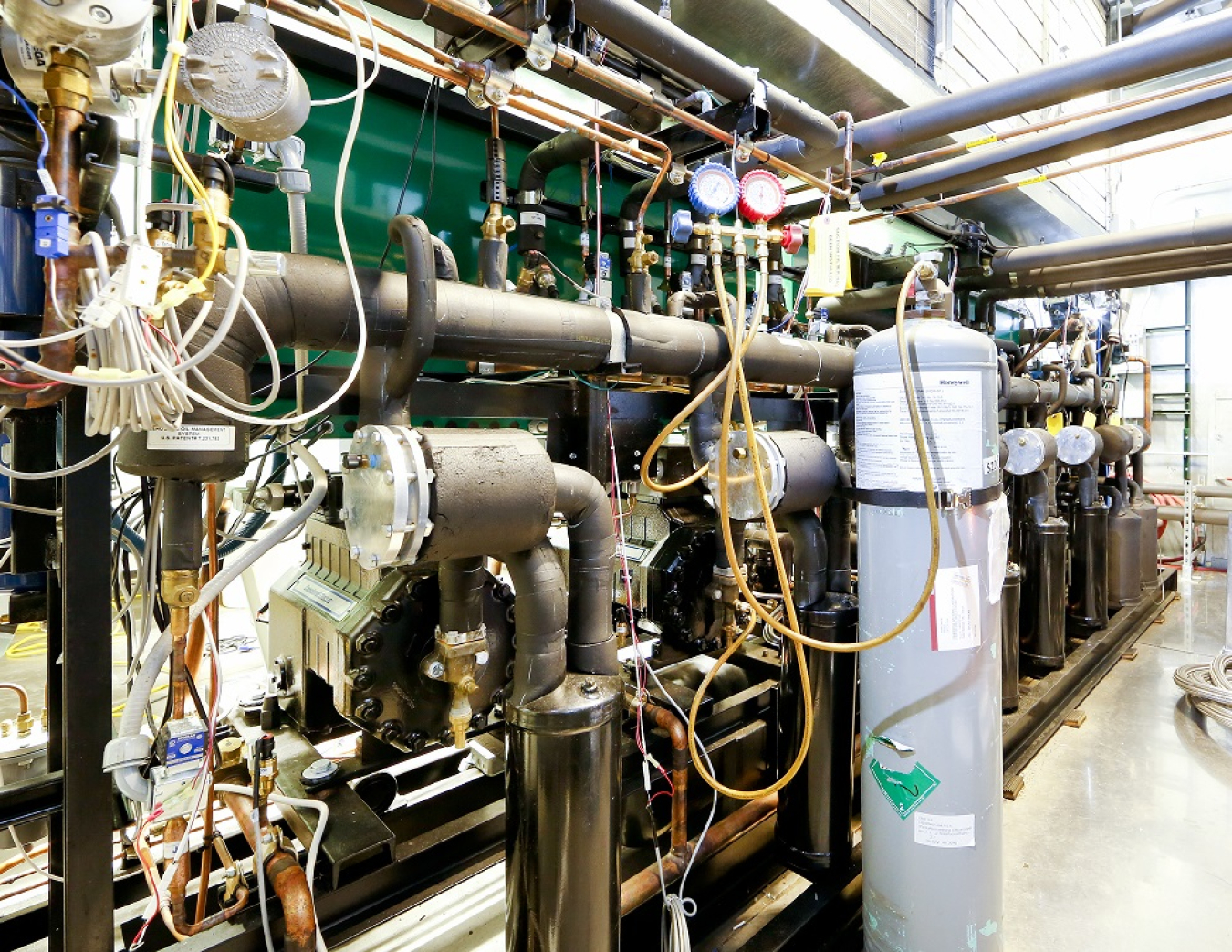
Research supported by the Energy Department’s Building Technologies Office that led to a major breakthrough in refrigeration systems’ efficiency is now being carried by a major U.S. refrigerant wholesaler. Marketed as Solstice N40, the new refrigerant also was named an R&D 100 Award Finalist in 2015. Solstice N40 is expected to yield big savings for supermarkets nationwide and greatly reduce greenhouse gas emissions. The Department funded Oak Ridge National Laboratory’s (ORNL) cooperative research and development agreement with Honeywell to develop an alternative refrigerant that minimizes the environmental footprint of supermarket refrigeration systems. This project supports the Administration's broader efforts to phase down hydrofluorocarbons (HFCs), powerful greenhouse gases that contribute to climate change.
Potential for Widespread Use in U.S. Supermarkets
Honeywell and ORNL developed Solstice N40, a non-toxic hydrofluoroolefin (HFO)-based refrigerant alternative for R-404A, the most common refrigerant used to cool supermarket refrigeration systems in the U.S. Solstice N40 (or R-448A) offers a lower-global-warming potential (GWP), energy-saving replacement for R-404A. Using Solstice N40, grocery stores will have the ability to retain their existing hardware and simply replace their current refrigerant with this option, greatly reducing the threat of environmentally harmful greenhouse gas emissions at a modest cost. Currently, there are about 37,000 supermarket refrigeration systems in use nationwide that could benefit from this replacement for R-404A without incurring the significant cost of replacing equipment.
What are Hydrofluorocarbons?
Hydrofluorocarbons, or HFCs, became popular following the phase-down of chlorofluorocarbons, another refrigerant, which, in the 1970s, scientists discovered were breaking down the ozone. While HFCs don’t destroy the ozone, they are strong greenhouse gases. As the most common refrigerant used to cool supermarket display cases in the United States today, their impact on the climate adds up. The typical HFC found in a supermarket refrigeration system is called R-404A, a hydrofluorocarbon mix of refrigerants with a high GWP of about 3,900. GWP potential characterizes a material’s ability to act as a greenhouse gas. For comparison, Solstice N40 has a GWP potential of 1,300, making it 67 percent less potent than R-404A.
A Refrigerant that Cut Costs and Protects the Envirnoment
Honeywell’s refrigerant also significantly improves system performance. In fact, ORNL’s research using an actual operating supermarket refrigeration system has shown Solstice N40 creates energy savings of 10 percent compared to R-404A. Overall, alternative refrigerants like Honeywell’s Solstice N40 offer supermarkets an easy solution to reduce their refrigeration system’s electricity consumption, save energy, and cut greenhouse gas emissions.
The Building Technologies Office leads a vast network of research and industry partners to continually develop innovative, cost-effective energy saving solutions—better products, better new homes, better ways to improve older homes, and better buildings in which we work, shop, and lead our everyday lives.
The Office of Energy Efficiency and Renewable Energy (EERE) success stories highlight the positive impact of its work with businesses, industry partners, universities, research labs, and other entities.
